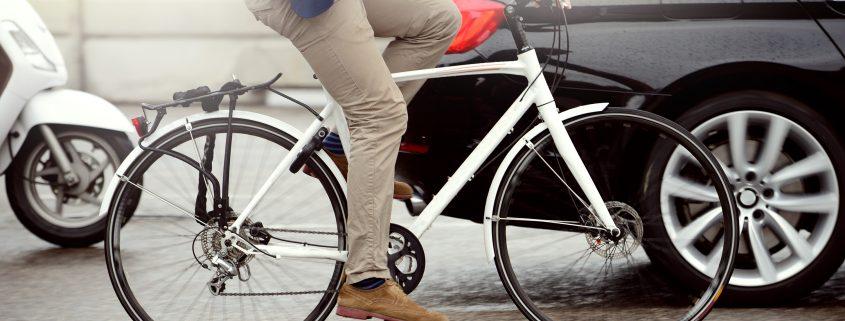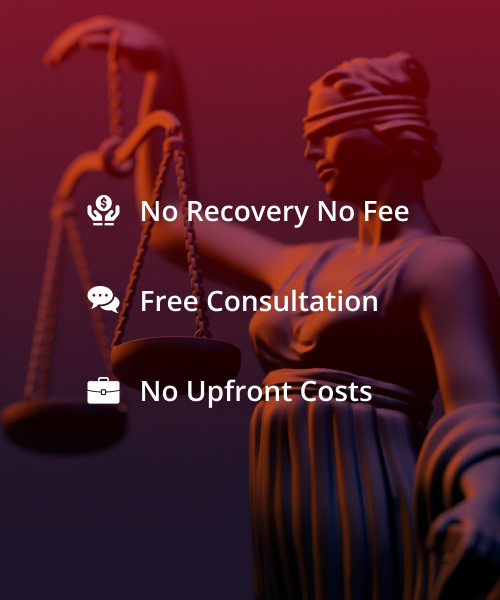- Free Case Evaluation: (305) 577-3777 Tap Here to Call Us
Bicycle Law in Miami

Did you know that Florida has bicycle regulations? Did you know that the laws regulating bicycles are found in the motor-vehicle section of Florida Statutes? Florida has very specific bicycle regulations that are part of the State Uniform Traffic Control (Florida Statute 316.2065).
“Every person propelling a vehicle by human power has all of the rights and all of the duties applicable to the driver of any other vehicle under this chapter, except as the special regulations in this chapter, and except as to provisions of this chapter which by their nature can have no application”. (F.S. 316.2065(a)). Translated, this means that a bicyclist has to follow the same rules as the operator of a car. Some examples of bicycle laws you may not have known of are:
- A bicycle rider must sit on a permanent seat – not stand, or sit on the handlebars or on a rack. (F.S. 316.2065(2)).
- A bicycle can only carry one rider. The exceptions are a child can ride with an adult rider in a child seat, backpack or sling or if it’s a bicycle built for two.
- A child cannot be left in a bicycle child seat unless an adult is actually controlling the bicycle.
- Children under 16 must wear an approved helmet. In fact, Florida Statute 316.2065(d) sets forth the standards for the type of helmet that must be worn. Failure to wear a helmet can result in a citation.
- Bicycles cannot be attached or pulled by cars while people are on them.
- Unless a bike lane exists, a bicycle rider must ride as close as practicable to the right-hand curb or edge of the roadway except under certain situations;
- A person operating a bicycle on a one-way highway with two or more marked traffic lanes may ride as near the left-hand curb or edge of the roadway as practicable.
- When riding on the roadway, bicyclists may not ride in tandem or two abreast.
- Bicycles in use between sunset and sunrise must have a lamp on the front with a white light that is visible from at least 500 feet and a rear lamp or reflector that exhibits a red light visible from 600 feet to the rear. (Again, violation of this rule may result in a citation)
- A person riding their bicycle along a sidewalk or in a crosswalk has all the rights (and duties) that a pedestrian has. However, bicyclists must yield right of way to pedestrians and give a signal that is audible before overtaking and passing a pedestrian.
- Every bicycle must have brakes that will enable the rider to stop the bicycle within 25 feet from a speed of 10 mph.
Operators of motor-vehicle and bicycles are each governed by the rules of the road. Both are required to obey speed limits, stop signs, traffic signals and lane designations. While “share the road” is a great slogan for the interaction between bicycles and motor-vehicles, in reality, bicyclists are the ones that are most vulnerable to accidents and injuries.
At Jeffrey R. Davis, P.A., we have represented numerous clients injured in bicycling accidents. Our law firm supports cycling and the rights of bicycle riders. We urge those that enjoy riding bicycles to use basic common-sense measures to stay safe and prevent accidents. Bicycle riders should wear colorful, high-visibility clothing. In an age of distracted drivers that are talking or texting on their phones, the more the cyclist can do to stand out the better. Use flashing front and rear lights – even during the day. Many cyclists attach lights to their helmets or clothing. Ride in groups instead of riding alone to increase visibility to motorists. Avoid riding at dusk or dawn and of course at night when motorists’ vision is most challenged. Never ride a bicycle under the influence of alcohol, medication or drugs. Cyclists must be on high alert at all times.
If you plan to ride a bicycle on a regular basis, it is a good idea to make sure your bicycle is professionally inspected and maintained. It is important that your bicycle be measured for fit as a bicycle that is too big or too small for the rider can be dangerous. Bicycle tires need replacement periodically. They do not last forever, and a sudden blowout can cause a fall. If riding in groups, learn bicycle group etiquette. Announcing one’s intention to pass another cyclist (or pedestrian), alerting your fellow riders to road debris and caution while drafting are all essential to a safe ride. Hydration and eye protection are important.
Wear a good quality helmet that is properly fitted. According to the Insurance Institute for Highway Safety, in a majority of bicyclists deaths, the more serious injuries are to the head, highlighting the importance of wearing a bicycle helmet. Helmet use has been estimated to reduce the odds of suffering a head injury by 50%, and the odds of head, face or neck injury by 33%. Bike helmets are designed and tested for their ability to protect against severe head injury, such as skull fracture. One newer offering in helmet technology is the multi-directional impact protection system (MIPS). This thin, low-friction liner inside the helmet allows the outer shell to slide a few millimeters across the skull on impact, reducing rotational force and the amount of energy transferred to the head. Rotational force is thought to be a factor in concussions. While there are many manufacturers that make fine helmets, the importance of getting the right fit cannot be overestimated. Older helmets or hand-me-down helmets should be discarded. Safety information about helmets is important! Look for the Consumer Product Safety Committee (CPSC) sticker inside the helmet. This label or sticker ensures that the helmet will provide a high-level of protection in the event of an impact. Helmet manufactured after March 1999 are required by law to meet the CPSC standard. The “ASTM”, “ANSI”, and “SNELL” labels meet the CPSC standards.
Bicycle riding is fun, great exercise and an activity that can be enjoyed by people of all ages. Understanding the laws relating to bicycle riding and practicing safe bike riding techniques are essential for an enjoyable, accident-free experience.
Jeffrey R. Davis, P.A. is an established Florida law firm that handles cases throughout the state of Florida involving bicycle accidents, injuries due to defective bicycles, accidents involving bicycles and motor-vehicles, accidents involving bicycles and other bicycles or unsafe conditions and product liability claims involving bicycles. For a free consultation, on a 24-hour basis, please call our law firm at (305) 577-3777.









